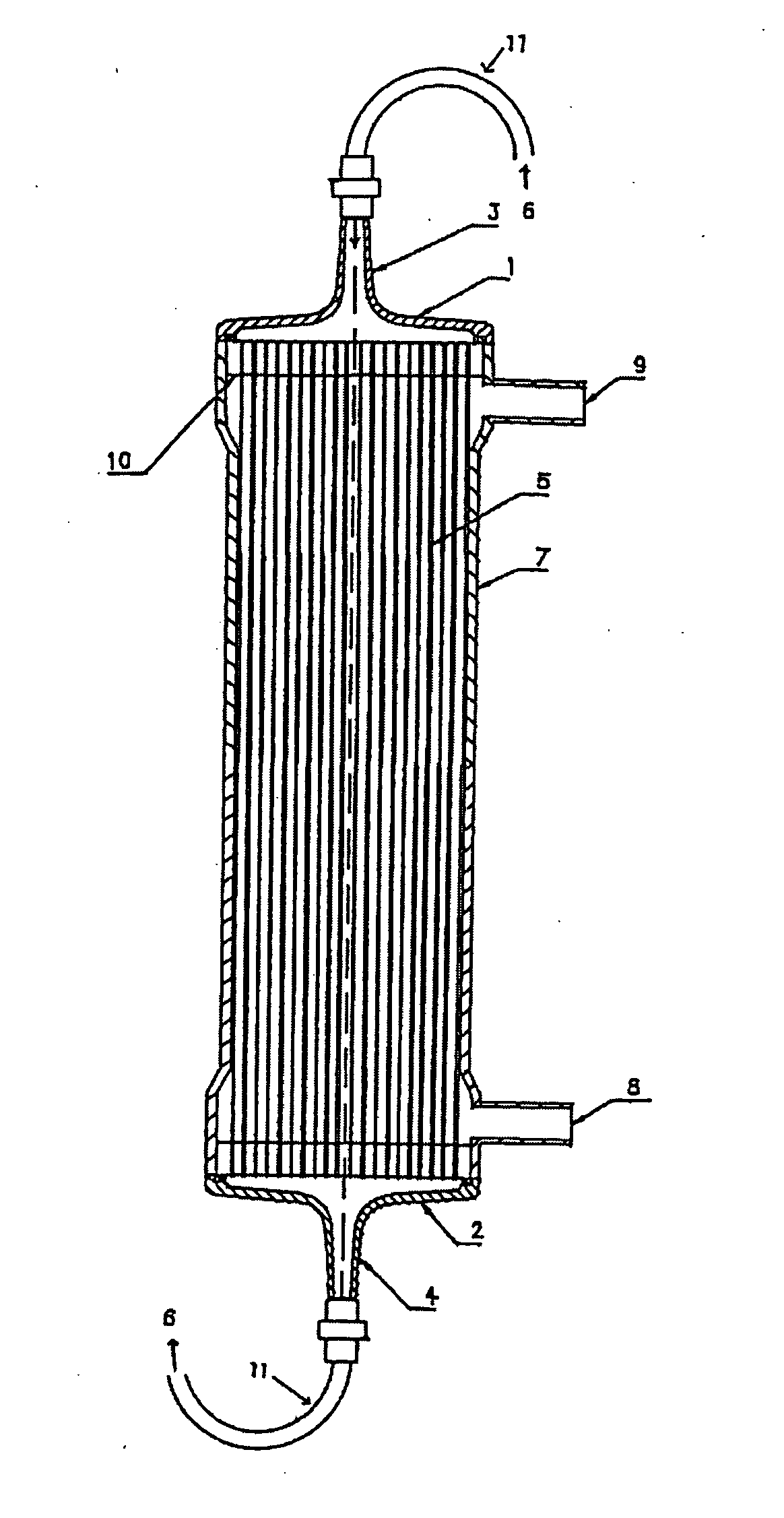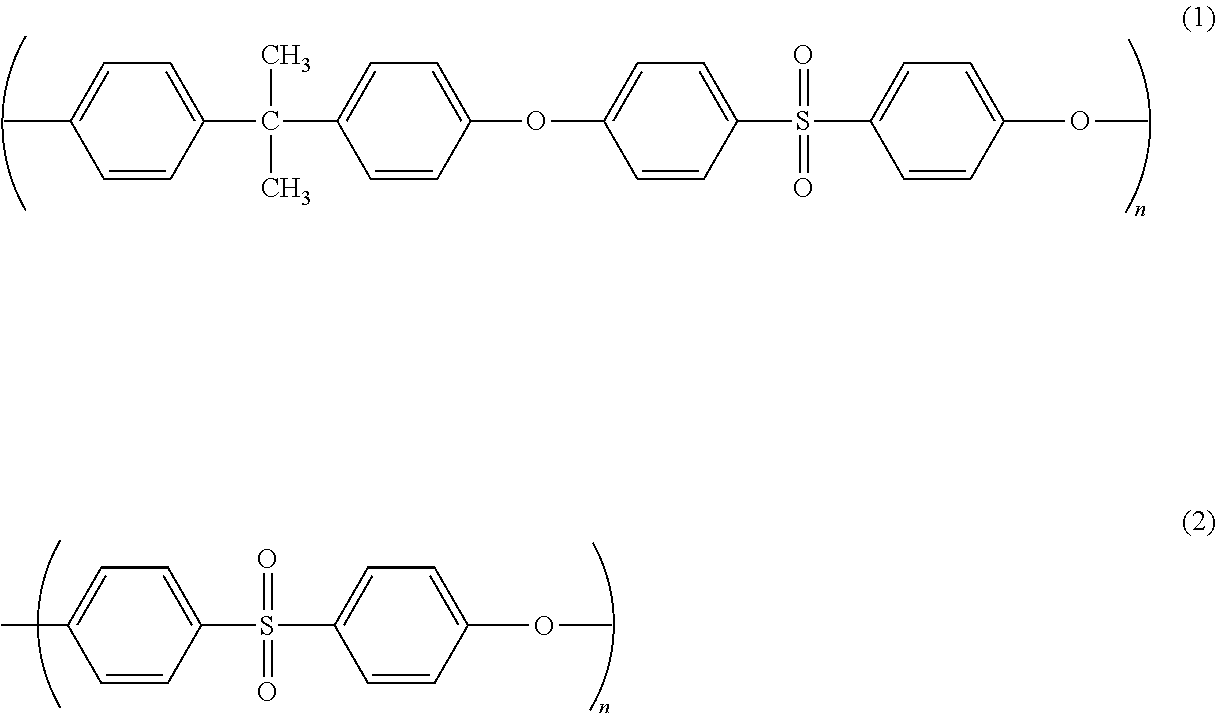Process for producing modified substrate
a technology of modified substrates and processing methods, applied in the direction of packaging foodstuffs, membranes, packaged goods, etc., can solve the problems of deterioration rather than improvement of hematologic compatibility, important problem of hematologic compatibility, etc., to achieve excellent inhibiting effect of adsorption, high adsorption performance, and high adsorption performan
- Summary
- Abstract
- Description
- Claims
- Application Information
AI Technical Summary
Benefits of technology
Problems solved by technology
Method used
Image
Examples
example 1
[0091]The above polysulfone film 1 was used as a substrate. Polyvinylpyrrolidone (K90 from BASF) was used as a hydrophilic polymer and ethanol was used as an antioxidant. The substrate was immersed in an aqueous solution containing the polyvinylpyrrolidone (0.1 weight percent) and ethanol (0.5 weight percent) and was irradiated with γ-ray. The absorbed dose of the γ-ray was 27 kGy. The film was rinsed with purified water. Subsequently, the film was placed in purified water at 80° C. and the purified water was stirred for 60 minutes. The purified water was replaced with fresh purified water and was stirred again at 80° C. for 60 minutes. Furthermore, the purified water was replaced with fresh purified water and was stirred at 80° C. for 60 minutes to remove the adsorbed polyvinylpyrrolidone. The measurement of the surface polyvinylpyrrolidone ratio, the measurement of the contact angle of the surface, the adhering tests of blood platelets, and the measurement of the soluble hydrophil...
example 2
[0095]Polyvinylpyrrolidone (K90 from BASF) was used as a hydrophilic polymer and ethanol was used as an antioxidant. An aqueous solution containing the polyvinylpyrrolidone (0.1 weight percent) and ethanol (0.5 weight percent) was prepared. One thousand milliliters of the aqueous solution was introduced in the blood side and a further 1,000 mL was introduced in the dialysate side of the above hollow fiber membrane module 1 so that the module was filled with the aqueous solution. Subsequently, the module was irradiated with γ-ray. The absorbed dose of the γ-ray was 29 kGy. The dissolution test of polyvinylpyrrolidone was performed using this module. As a result, the amount of dissolution of polyvinylpyrrolidone was 0.15 mg / m2. A hollow fiber in the module was cut into pieces to evaluate the surface polyvinylpyrrolidone ratio, the soluble hydrophilic polymer ratio, and the numbers of adhered blood platelets. Table 2 shows the results.
example 3
[0096]Polyvinylpyrrolidone (K90 from BASF) was used as a hydrophilic polymer and sodium pyrosulfite was used as an antioxidant. An aqueous solution containing the polyvinylpyrrolidone (0.1 weight percent) and sodium pyrosulfite (500 ppm) was prepared. One thousand milliliters of the aqueous solution was introduced in the blood side and a further 1,000 mL was introduced in the dialysate side of the hollow fiber membrane module 1 so that the module was filled with the aqueous solution. Subsequently, the module was irradiated with γ-ray. The absorbed dose of the γ-ray was 29 kGy. A hollow fiber in the module was cut into pieces to evaluate the surface polyvinylpyrrolidone ratio, the soluble hydrophilic polymer ratio, and the numbers of adhered blood platelets. Table 2 shows the results.
PUM
| Property | Measurement | Unit |
|---|---|---|
| wavelength range | aaaaa | aaaaa |
| surface area | aaaaa | aaaaa |
| weight percent | aaaaa | aaaaa |
Abstract
Description
Claims
Application Information
 Login to View More
Login to View More - R&D
- Intellectual Property
- Life Sciences
- Materials
- Tech Scout
- Unparalleled Data Quality
- Higher Quality Content
- 60% Fewer Hallucinations
Browse by: Latest US Patents, China's latest patents, Technical Efficacy Thesaurus, Application Domain, Technology Topic, Popular Technical Reports.
© 2025 PatSnap. All rights reserved.Legal|Privacy policy|Modern Slavery Act Transparency Statement|Sitemap|About US| Contact US: help@patsnap.com



